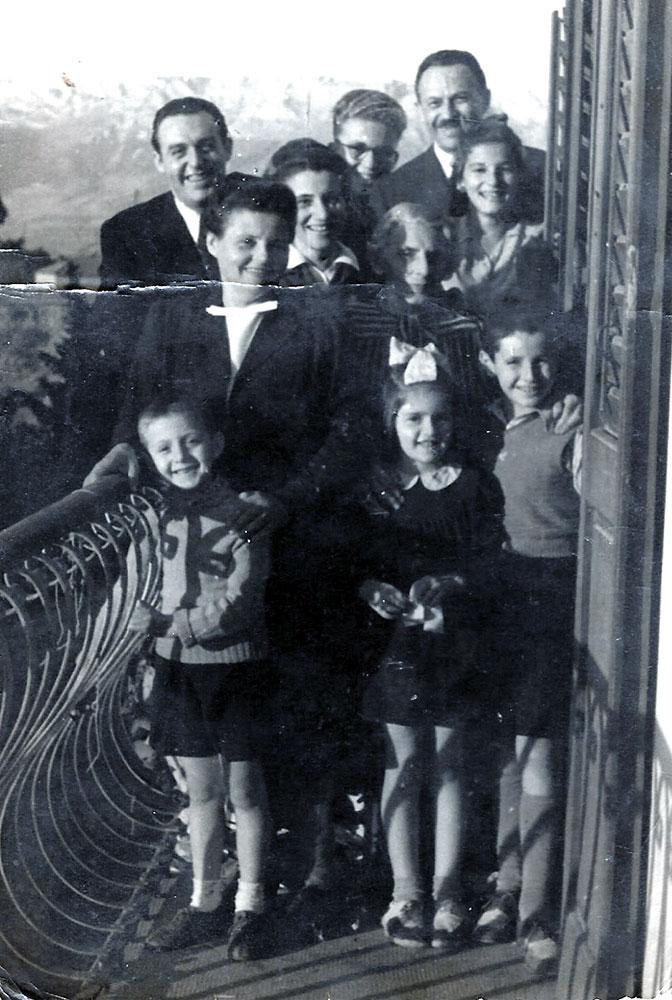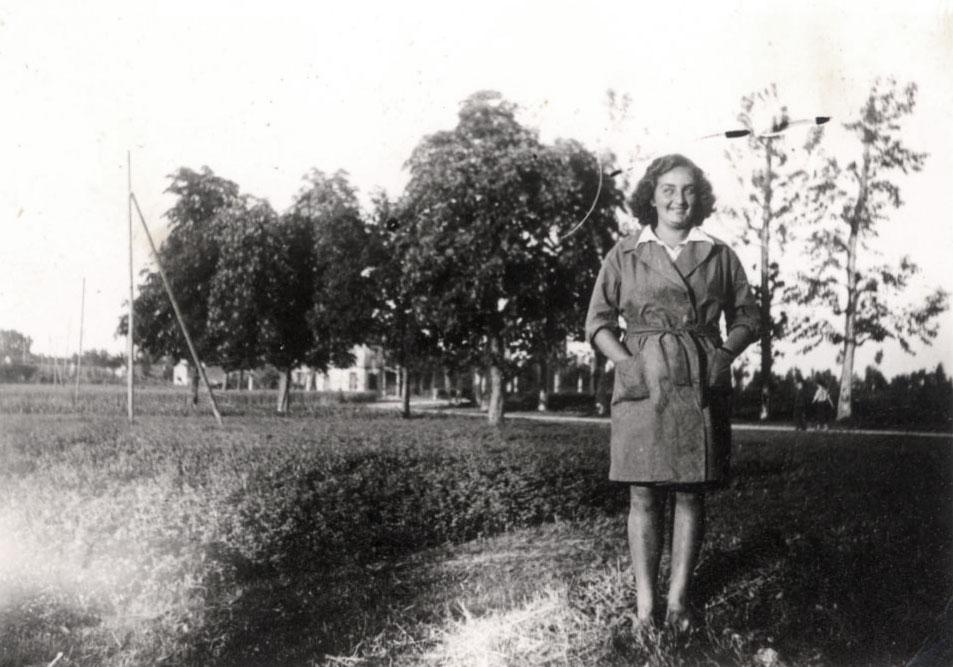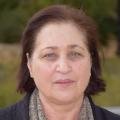
Yad Vashem Photo Archive


Yad Vashem Photo Archive

Throughout the Holocaust, in the shadow of their unprecedented persecution by the German Nazi regime and their collaborators, there were Jews who endeavored to save their fellow Jews – often beyond their immediate family or acquaintances. The conditions for rescue were not always ripe and the attempts were not always successful, but that did not deter these remarkable individuals and groups from trying. Jews saved other Jews through many kinds of activities – forging documents, assisting in locating hiding places, smuggling across borders, providing much needed food, clothing and medicines, and more. These rescuers operated in their local communities, ghettos and camps. They acted alone, as partisans or as part of organized rescue groups.
Eleven of these inspiring stories feature in a new online exhibition which was uploaded to Yad Vashem's website to mark Holocaust Remembrance Day 2020. Entitled "Rescue by Jews: 'One for All'", the exhibition brings a small sample of the countless stories of selfless bravery and solidarity Jews exhibited during the Holocaust, despite the horrific circumstances in which they found themselves. The stories provide a glimpse into the harrowing experiences, as well as immeasurable pride, of Jewish rescuers.
Two of the stories included in the exhibition are related, and involve many of the same brave individuals who carried out these daring rescue attempts.
In April 1941, the Germans and the Italians occupied Yugoslavia. As part of their plan to dismantle the country, the Germans established a puppet state known as Independent Croatia under the leadership of Ante Pavelić, the head of the racist Ustasha (Ustaša) movement. During the years 1941-1945, the Pavelić regime brutally murdered some 30,000 Jews, hundreds of thousands of Serbs and objectors to the regime, and thousands of Roma and Sinti. Heavy fines were imposed on the Jews, their movements were restricted, and they were forced to wear yellow stars.
In late November 1941, the Ustasha authorities issued an order to the Jewish community of Osijek to find a location to confine some 2,000 women and children. The community heard that in the town of Djakovo there was an abandoned flourmill belonging to the church, which could house a large number of people. The church opposed the idea of turning one of its properties into a concentration camp, but the Ustasha nevertheless appropriated the flourmill and on 2 December 1941, some 1,200 women and children, mostly from Sarajevo, were brought there. On 20 December another 700 people arrived. The vast majority of the inmates were Jewish, with another approximately 50 gentile Serbian women. Initially, the internal running of the camp was handled by the Jews. Two local Croatian policemen were stationed at the gate.
The Osijek Jewish community established a welfare committee to assist with the camp, which required volunteers. A group of youngsters calling themselves Leteća Ekipa (the "Flying Brigade") volunteered to go to Djakovo and organize the camp. The members of the group stayed in a hotel next to the town railway station, and went on foot to the site every day in order to make the flourmill suitable for habitation. Together with the Jewish community, Leteća Ekipa helped build bunks, and obtained food, medicines and clothing for those imprisoned there.
Due to the efforts of the Osijek Jewish community and bribes paid to the local police, the policemen permitted the removal of children from the camp and their safe passage to Jewish families in Osijek and Vinkovci. Leo Grunwald and Isidore Ferrera from Vinkovci arrived with a truck to collect the children.
Sarina Munchik (née Brodski, later Shulamit Munchik), from Sarajevo, who at the age of 16 was a prisoner in Djakovo (Ðakovo) concentration camp, testified after the war:
"One day, we heard a rumor that they want to evacuate children… up to age 12 or 14 to Vinkovci… and that families had already been organized to adopt them. Mother got involved and said that I was born in 1928 and begged them to take me. Of course, our parting was extremely hard, I didn't want [to go] at all."
Members of Leteća Ekipa went along with Brodski's plan. They forged Sarina's age and took her out of the camp with dozens of other children.
Leo Grunwald recalled:
"The removal of 37 children up to age 12 was permitted… When we arrived at the Djakovo camp, there was a female Jewish doctor from the Osijek community who helped us prepare the children for departure to Vinkovci… Some families that knew me… approached me and asked me to take their children so that they would be saved. The truck was large and covered with tarp, so I took advantage of the opportunity without considering the possible repercussions of my actions. Using the permit I had for 37 children, I took 57 children, such that only the second digit, the number 7, matched the permit. The 57th child I took was Sarina Brodski."
The children were sent to live with Jewish families in Vinkovci and Osijek. Some of them were moved later to Split, which was in the area of Croatia under Italian rule. Sarina reached Split, and from there was taken with a group of children to Villa Emma in Nonantola, Italy. From Villa Emma, the children, including Sarina, were smuggled into Switzerland.
Also included in this rescue operation were Gabriel-Gavro Sternberg and his sister Leah. The Sternbergs had arrived in Djakovo from Sarajevo in late December. In his testimony, Gabriel described the camp:
"There was a large hall, and everyone had to claim a piece of the floor... we were there for perhaps two weeks... One day, they came with a truck and gathered many of the children. There were parents who didn't allow their children to leave [the camp], but our mother said to us: Go, it will be good for you."
Gabriel and Leah were transferred to Vinkovci, where they were separated and placed with local Jewish families. After some three months, they were sent to Osijek, where they were reunited with their cousin Leo Herman.
Gabriel and Leah's mother Josephine (née Zeichner) remained imprisoned in Djakovo. Two of Josephine's sisters managed to escape to Split, and tried to arrange for Gabriel, Leah and Leo to come live with them. In the spring of 1942, the sisters hired someone to bring the children to Split. However, the children were abandoned in Zagreb, some 260 km (160 miles) north of their destination.
In Zagreb, the three managed to find a Jewish retirement home run by Ignac-Eliyahu Weiss. Gabriel later explained:
"There were old people there, and the three of us, three children, me being the eldest, nine-and-a-half, while they [Leah and Leo] were five-and-a-half. We slept together in the same bed because there wasn't any room... Mr. Weiss made sure we had food, clothes and a place to sleep, until one day... they [the Ustasha] decided that the elderly also had to be taken."
After the retirement home residents were gathered in a local school, Ignac Weiss smuggled the children out hid with them in an attic in Zagreb. His nephew Shimon met them there and helped take care of them. Several weeks later, a Muslim woman sent by their aunts arrived in Zagreb, and brought the three children to Split, where they were reunited.
In March 1942, local policemen guarding the gate of the Djakovo camp were expelled, and replaced with Ustasha guards from the Jasenovac concentration camp. They had orders not to allow members of the Osijek community enter the camp. The food arriving from the community was confiscated, and the treatment of prisoners was brutal. In June 1942, the camp was liquidated, and all the women and children were deported to Jasenovac and murdered upon arrival. Among them were Gabriel and Leah's mother, Josephine; Sarina's mother, father and sister, Luna, Leo and Dina Brodski; and Leo Herman's mother, Bertha. During the liquidation of the camp, members of the Leteća Ekipa managed to escape through a gap in the wall of a building and fled to Osijek.
In August 1942, the Jewish communities of Vinkovci and Osijek were also liquidated. The children from Djakovo were sent to their deaths along with the families who adopted them. Thankfully, Aryeh Hermoni (née Leo Herman), Gabriel Shenar-Sternberg and Leah Igner-Sternberg survived in Split. They all immigrated to Israel after the war. Shulamit Sarina Munchik also survived having made her way to Switzerland and then to Israel. Aryeh Hermoni passed away in 2019.
Siblings Leah Igner and Gabriel Shenar currently live in an assisted living facility in the center of Israel in adjacent apartments. During the process of curating this online exhibition, I was thrilled to be able to connect Leah and Gabriel with the nephew of Ignac-Eliyahu Weiss, Shimon Tsachor-Weiss. They hope to meet as soon as the current corona crisis abates.
This blog was originally published in the Times of Israel.
Related:
From the Yad Vashem Artifacts Collection: grave markers inscribed with the names of Jewish women and children who were victims of Djakovo camp in Croatia >>>










